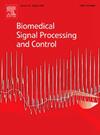动态增强MRI中乳腺肿瘤分割的无注释方法
IF 4.9
2区 医学
Q1 ENGINEERING, BIOMEDICAL
引用次数: 0
摘要
乳腺癌仍然是全世界妇女癌症相关死亡的主要原因。动态对比增强磁共振成像(DCE-MRI)是诊断乳腺肿瘤的关键工具,因为它提供了组织结构的高分辨率图像。然而,目前分析这些扫描的方法面临两个主要限制:要么需要放射科医生进行劳动密集型的手工注释,要么依赖于精度有限的自动化技术。为了解决这些挑战,本研究提出了一种无注释的方法,称为ACM(算法分割,约束过滤,模型训练),既消除了手动注释的需要,又提高了分割的准确性。与以往仅依赖深度学习或传统算法的方法不同,ACM采用严格的约束来过滤传统算法生成的伪标签,并将这些伪标签与未标记的数据集成在一起进行半监督模型训练。此外,还引入了新的策略,包括多类策略和特殊增强策略,以缓解基于人工智能的医学图像分析中的常见挑战。在包含1209个病例的大型多中心数据集上的实验验证表明,我们的方法在肿瘤分割方面实现了83.06%的Dice相似系数(DSC),接近监督方法的性能。此外,在外部测试集上,我们的方法获得了74.45%的交联(IoU),比现有的最佳无监督方法高出23.4%。这些结果突出了ACM的稳健性和有效性,它有可能显著减少放射科医生的工作量,提高诊断一致性,促进早期乳腺癌检测和个性化治疗计划。源代码可在https://github.com/Ho-Garfield/ACM-pipeline上公开获得。本文章由计算机程序翻译,如有差异,请以英文原文为准。
Annotation-free method for breast tumour segmentation in dynamic contrast-enhanced MRI
Breast cancer remains the leading cause of cancer-related mortality among women worldwide. Dynamic contrast-enhanced magnetic resonance imaging (DCE-MRI) is a crucial tool for diagnosing breast tumours, as it provides high-resolution images of tissue structures. However, current methods for analysing these scans face two major limitations: they either require labour-intensive manual annotations by radiologists or rely on automated techniques with limited accuracy. To address these challenges, this study proposes an annotation-free method called the ACM (Algorithmic segmentation, Constraint filtering, Model training) that both eliminates the need for manual annotations and increases the segmentation accuracy. Unlike previous methods, which rely solely on deep learning or traditional algorithms, the ACM incorporates strict constraints to filter the pseudo-labels generated by traditional algorithms and integrates these pseudo-labels with unlabelled data for semi-supervised model training. Additionally, novel strategies, including the multi-class strategy and special augmentations, are introduced to mitigate common challenges in AI-based medical image analysis. Experimental validation on a large multicentre dataset comprising 1209 cases demonstrates that our method achieves a Dice similarity coefficient (DSC) of 83.06% in terms of tumour segmentation, approaching the performance of supervised methods. Furthermore, on an external test set, our method attains an Intersection over Union (IoU) of 74.45%, surpassing the best existing unsupervised methods by 23.4%. These results highlight the robustness and effectiveness of the ACM, which has the potential to significantly reduce the workload of radiologists, improve diagnostic consistency, and facilitate earlier breast cancer detection and personalized treatment planning. The source code is publicly available at https://github.com/Ho-Garfield/ACM-pipeline.
求助全文
通过发布文献求助,成功后即可免费获取论文全文。
去求助
来源期刊

Biomedical Signal Processing and Control
工程技术-工程:生物医学
CiteScore
9.80
自引率
13.70%
发文量
822
审稿时长
4 months
期刊介绍:
Biomedical Signal Processing and Control aims to provide a cross-disciplinary international forum for the interchange of information on research in the measurement and analysis of signals and images in clinical medicine and the biological sciences. Emphasis is placed on contributions dealing with the practical, applications-led research on the use of methods and devices in clinical diagnosis, patient monitoring and management.
Biomedical Signal Processing and Control reflects the main areas in which these methods are being used and developed at the interface of both engineering and clinical science. The scope of the journal is defined to include relevant review papers, technical notes, short communications and letters. Tutorial papers and special issues will also be published.
 求助内容:
求助内容: 应助结果提醒方式:
应助结果提醒方式:


